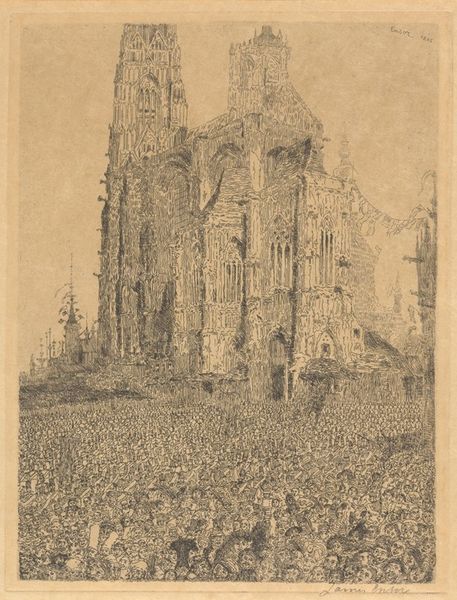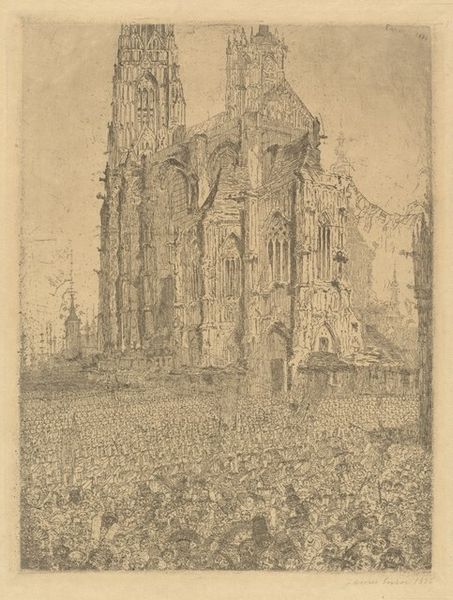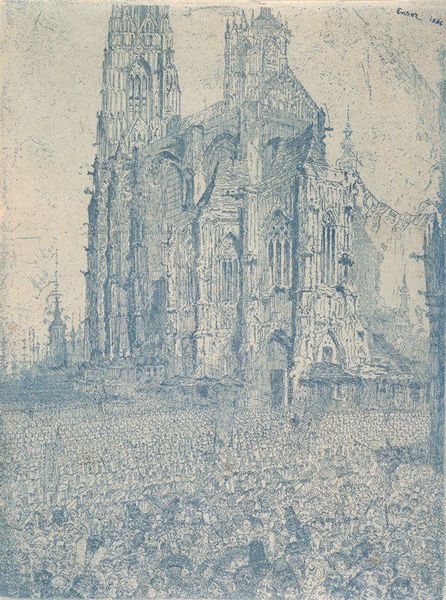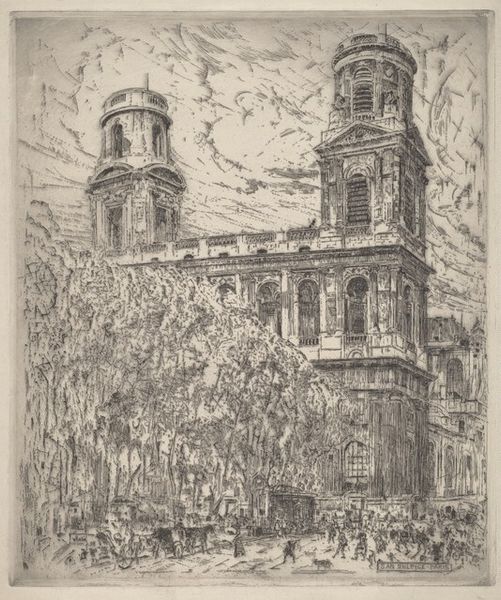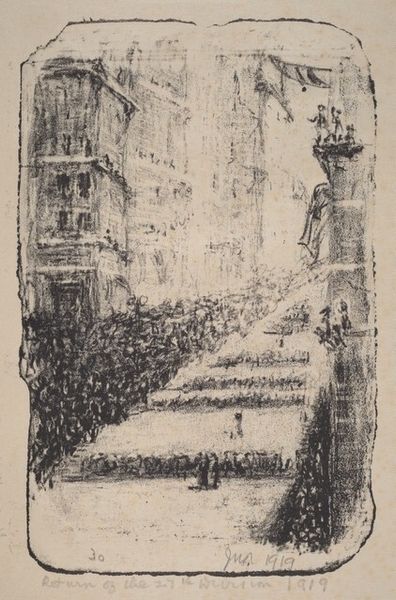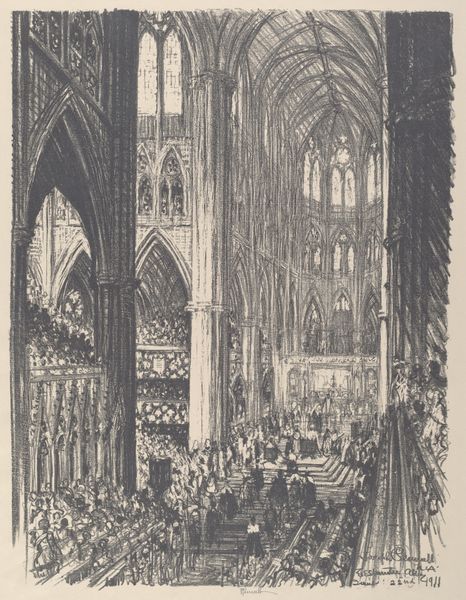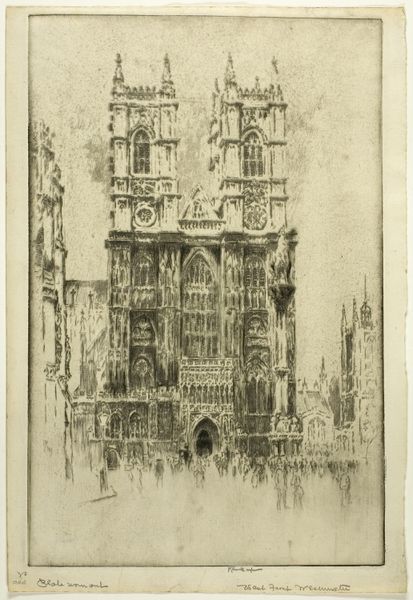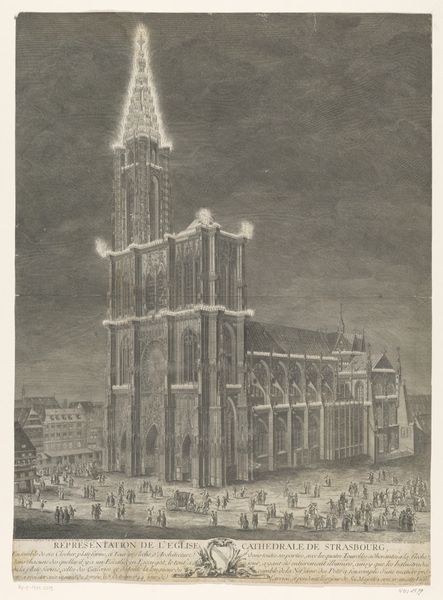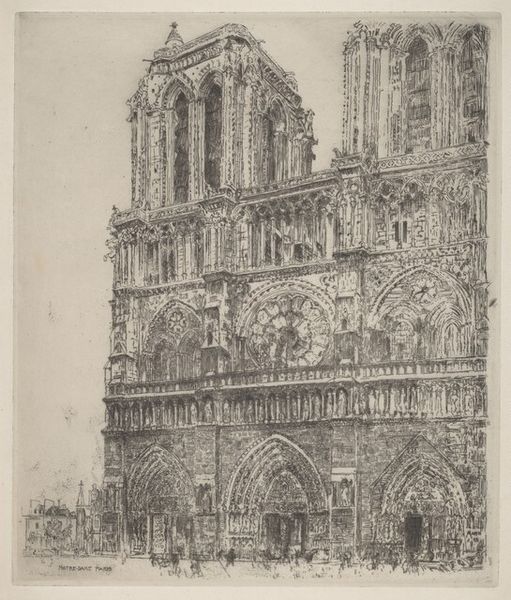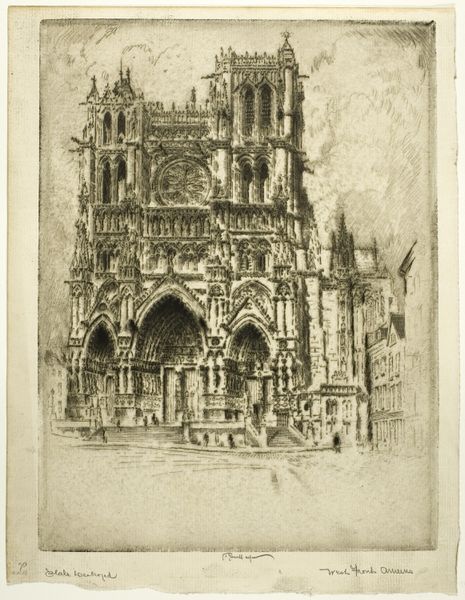
drawing, etching
#
drawing
#
etching
#
symbolism
#
cityscape
Copyright: Public Domain: Artvee
James Ensor created "The Cathedral" using etching, a printmaking technique that relies on the corrosive power of acid. First, a metal plate would have been coated with a waxy, acid-resistant material. The artist then scratched an image into this coating, exposing the metal underneath. Immersing the plate in acid would bite into the exposed lines, creating grooves. Once the coating was removed, ink could be applied to the plate, filling these etched lines. The surface would be wiped clean, and the image transferred to paper under high pressure using a printing press. The web of lines in "The Cathedral" gives the image its compelling texture. These lines, made by the repetitive, even meditative action of etching, reflect a huge amount of work. Ensor's choice of printmaking, rather than painting, suggests a democratic impulse, making his art available to a wider audience. By focusing on materials and the labor-intensive process of etching, we can see "The Cathedral" not just as a depiction of a building and the people who occupy it, but as an object that embodies social values.
Comments
No comments
Be the first to comment and join the conversation on the ultimate creative platform.
